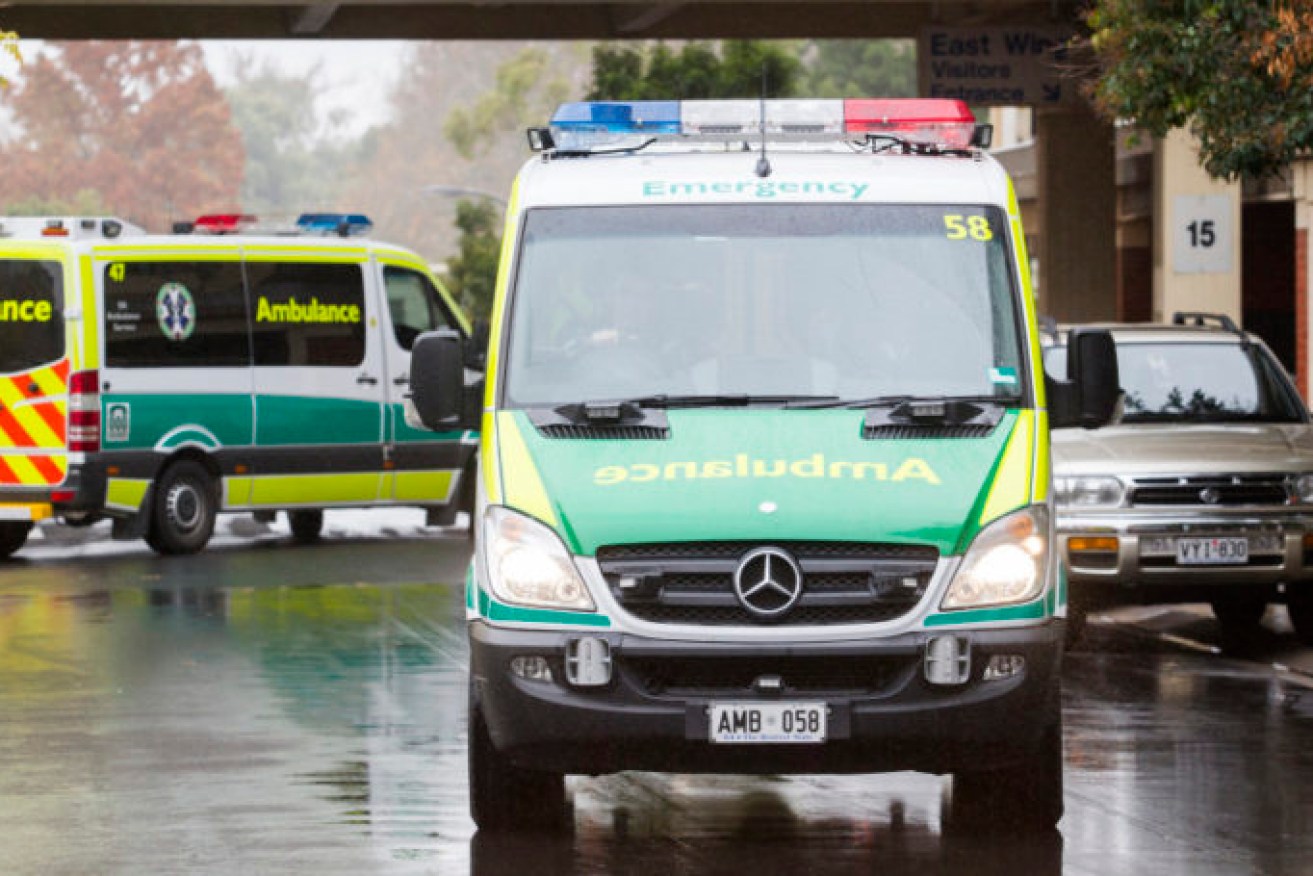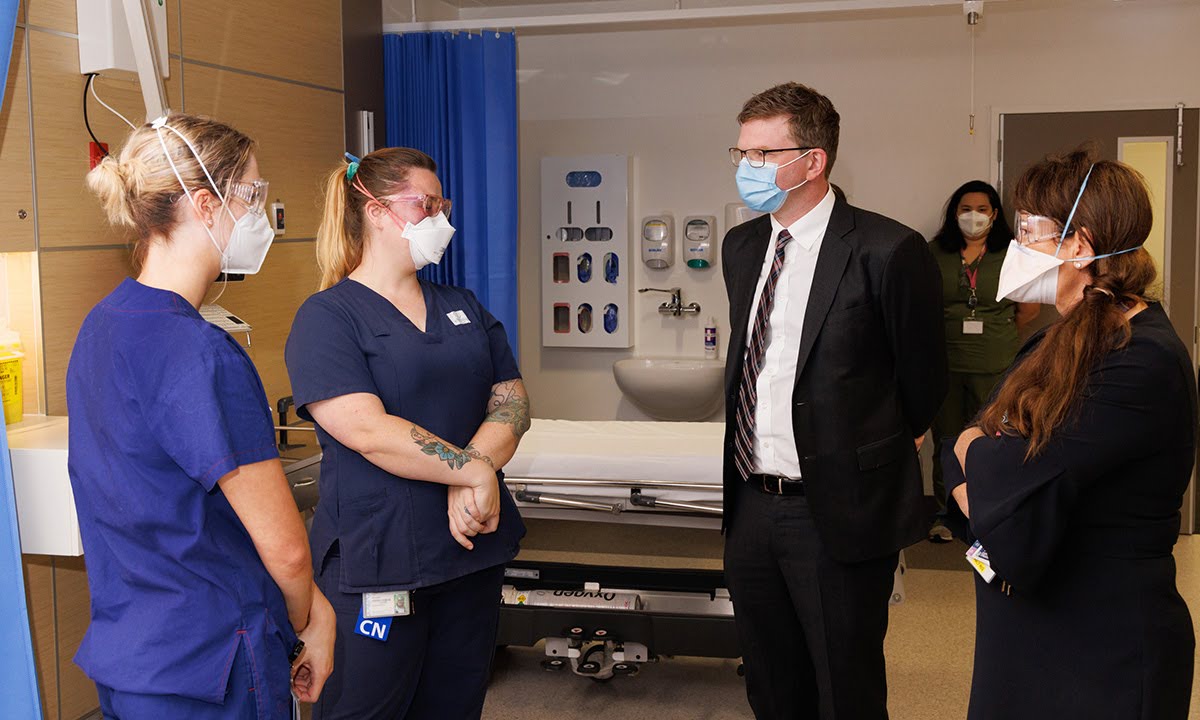Ambulance ramping, wait times surge ahead of winter
South Australian ambulance response times were the worst on record this financial year with only 61 per cent of urgent life-threatening callouts seen on time, new figures show, as the government revealed that ambulances spent 3412 hours ramped outside hospitals in May.

Picture: Ben Macmahon/AAP
Ambulances in the metropolitan area are supposed to arrive at priority one callouts within eight minutes, but in 2021-22, 39 per cent of patients in that category waited longer.
Meanwhile, almost half – 45 per cent – of category two patients with an increased risk of mortality or morbidity were left waiting for an ambulance longer than the accepted 16-minute response time.
Ramping also spiked, with ambulances spending 3412 hours waiting outside hospitals in May – up from 2632 hours in April – due to blockages within hospital emergency departments.
Health Minister Chris Picton said each day, over 100 patients are regularly stuck waiting inside hospital EDs – some for days on end – because they can’t get a bed.
“The pressure on our health system continues to increase and increase,” he said.
“(It) is clearly unacceptable and that’s why we need to take urgent action to open more beds.”
Labor was elected in March promising to “fix the ramping crisis” by returning ramping levels to where they were four years ago. The SA Ambulance Employees’ Association waged a high-profile campaign costing $400,000 in support of the pledge.
We are facing huge issues in terms of this winter where we simply don’t have the capacity across the health system
In May, the union defended its decision to wind down its campaign after the election, with general secretary Leah Watkins telling InDaily that it was important to make the public aware of “how bad things were” under the former Marshall Government.
The Malinauskas Government’s first budget, handed down on Thursday, included $540 million over four years for 326 extra hospital beds, with 228 more to be made available after a Flinders Medical Centre upgrade and the completion of the new Mount Barker Hospital.
Asked how long it would take for the ambulance response and ramping figures to start going down, Picton conceded it wouldn’t be this winter.
“We were very clear that this is going to take time because these beds have to be built, these doctors and nurses have to be hired and we’re doing that as fast as we possibly can,” he said.
“In the interim, we’re doing everything that we can with the current ability we have in the system to open up more capacity… to address those systemic issues in the system.
“We are facing huge issues in terms of this winter where we simply don’t have the capacity across the health system to be able to make sure that we’re not going to be ramping or we’re not going to cancelling elective surgery.”

Chris Picton with nurses at the Royal Adelaide Hospital. Photo: Tony Lewis/InDaily
Making the situation worse is the recent spike in influenza cases, with about 190 cases admitted to hospital so far this year.
That is on top of the expected 39 cent increase in respiratory presentations during the winter months compared to the rest of the year.
The government’s “Winter Demand Strategy”, released this morning, states 80 additional hospital beds would open to deal with winter demand.
They include 10 mental health beds, 10 “transition to home” beds, 10 “virtual kids at home” beds, 28 private sector beds, 16 additional beds at the Hampstead Rehabilitation Centre and six extra beds at the Strathalbyn and District Health Service.
The government is also in the process of splitting the Royal Adelaide Hospital’s “COVID care centre” in two and repurposing half of the space for a new acute assessment centre.
The 12-bed assessment centre, to open in about two weeks and funded out of SA Health’s existing budget, would be for patients who require specialist assessment, freeing up space in the hospital’s ED.
Royal Adelaide Hospital emergency physician Dr Megan Brooks said specialist doctors would work in the centre to determine whether patients need to be admitted to a ward.
“This could be a patient who a general practitioner has seen and they’ve had a scan and that shows something that could be a new cancer,” she said.
“At the moment that patient would sit in the emergency department waiting for that consultation to happen, but in two weeks’ time we’ll be able to do that in this space.
“We’re bringing the specialist care down from upstairs, down to the front door, which is where the patients need them most.”
The COVID care centre would be reduced from 24 to 12 beds, once the new acute care centre opens.
Brooks said GPs were now “much more confident with managing COVID as an illness” and increased access to new medications meant some patients no longer need to go into hospital to receive treatment.




